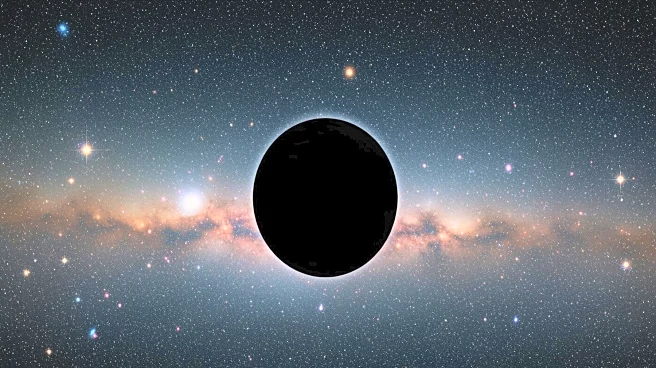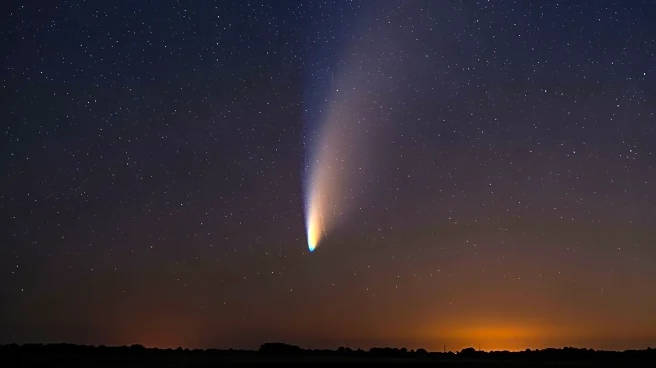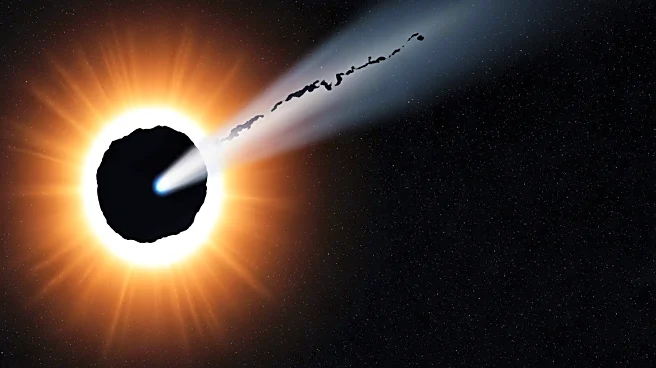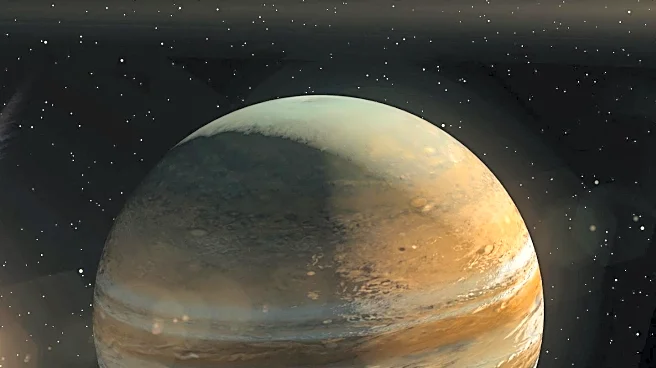What's Happening?
Researchers have identified a potential new planet, dubbed 'Planet Y,' that may exist in the outer Solar System, closer than the hypothesized Planet Nine. This discovery is based on a 15-degree tilt observed
in the orbital alignment of objects in the Kuiper Belt, suggesting the gravitational influence of an unseen planet. The proposed planet is estimated to be between the sizes of Mercury and Earth, orbiting at a distance of 80 to 200 astronomical units from the Sun.
Why It's Important?
The potential existence of Planet Y could significantly alter our understanding of the Solar System's structure and dynamics. If confirmed, it would provide insights into planetary formation and the gravitational interactions that shape celestial bodies' orbits. This discovery could also guide future astronomical research and the development of new observational technologies to detect distant planets.
What's Next?
Further observations and simulations are needed to confirm the existence of Planet Y and understand its characteristics. Astronomers will continue to analyze the Kuiper Belt's orbital dynamics to gather more evidence. The search for Planet Y could also inform the design of future space missions and telescopes aimed at exploring the outer reaches of the Solar System.
Beyond the Headlines
The search for Planet Y highlights the ongoing quest to uncover the mysteries of the Solar System and the potential for undiscovered worlds. It underscores the importance of innovative research methods and the role of advanced technology in expanding our cosmic knowledge. The discovery process also reflects the collaborative nature of scientific exploration, as researchers work together to solve complex astronomical puzzles.











